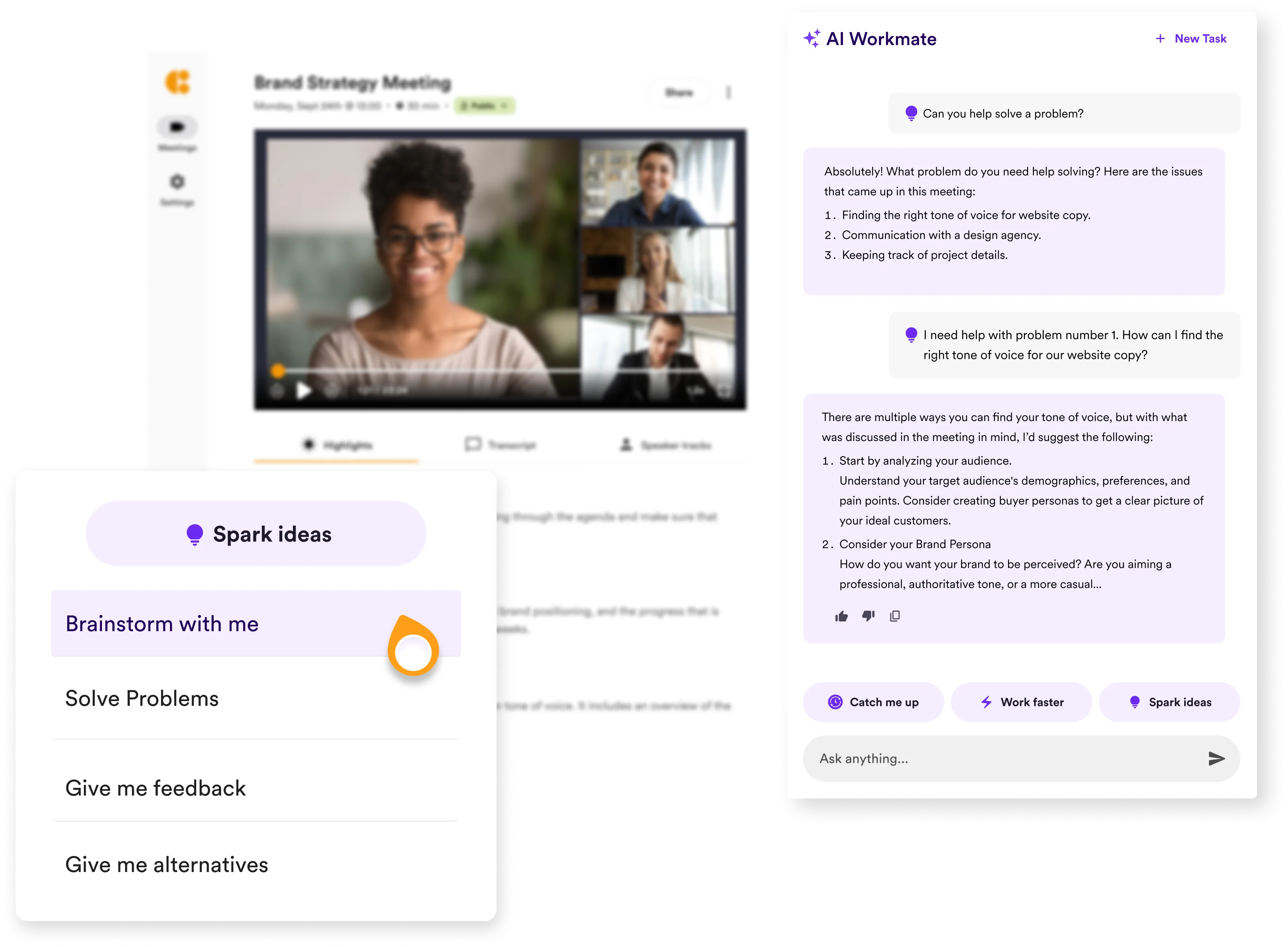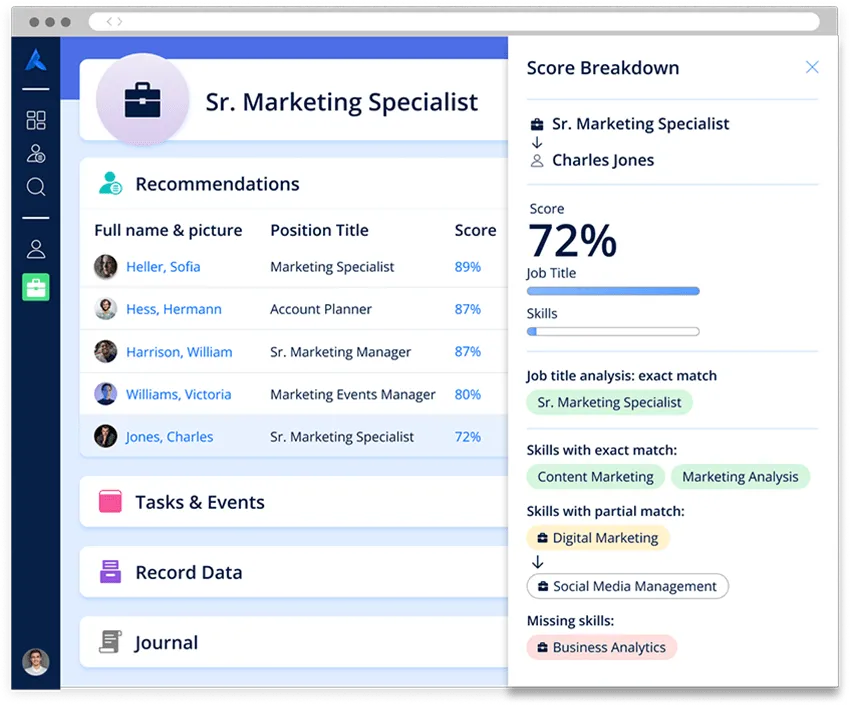Interview Shadowing : Everything You Need to Know

You want to make sure your team conduct fair and accurate interviews?
Shadow interviewing might be just the right way to do it.
Here, we'll break down the different types of shadow interviews, their benefits, and necessary precautions.
What are Shadow Interviews and Their Different Types?

Shadow interviews are interviewers where an external observer watches the conversation to learn and give feedback. These interview techniques are more and more part of the interview process of big companies, such as Google or Amazon.
It can work in many ways:
- Passive Observation: In this type, the shadow interviewer silently observes the interview. They focus on how the interviewer conducts the session, the questions asked, and the candidate's responses. This method is ideal for training new interviewers, as it provides a clear example without the pressure of participation.
- Active Participation: Here, the shadow interviewer takes a more hands-on role. They may ask questions, engage with the candidate, or lead parts of the interview. This allows them to directly apply what they've learned and get immediate feedback.
- Feedback Sessions: After the interview, the shadow interviewer provides feedback. This can include the effectiveness of questions, the interviewer's manner, and the overall structure. Feedback sessions can offer actionable insights to improve future interviews.
- Peer-to-Peer Shadowing: In this type, colleagues at the same level observe each other’s interviews. This fosters continuous improvement and learning within your team. Peers can share best practices and offer constructive criticism, leading to a more consistent interviewing approach.
- Management Shadowing: Here, managers or supervisors observe interviews conducted by their subordinates. This technique ensures the process aligns with your company's standards and allows managers to mentor their team.
What are the Benefits of Shadow Interviewing?

Although they might look like micromanager of one recruiter over another, shadow interviewing offers numerous advantages in terms of hiring accuracy and objectivity :
Better and Cheaper Interviewer Training : Shadow interviews are a powerful tool for developing your team's interviewer skills. New interviewers can observe seasoned professionals, learning best practices and effective questioning techniques. It can reduce the need for expensive external training programs.
Consistency in Interviews:Using shadow interviews helps ensure consistency across your interviews. When all interviewers follow a similar approach, it reduces variability in the candidate assessment process. And studies show this structured interviewing is the most reliable and objective recruitment technique.
More Objective Candidate Evaluation: With an additional perspective, shadow interviewing enhances candidate evaluation. The shadow interviewer can notice things that the primary interviewer might miss This dual perspective ensures that you don’t overlook critical aspects of a candidate’s responses and behavior and overcome personal bias.
Confidence Building: For new interviewers, shadowing can significantly boost confidence. Watching experienced interviewers handle different situations and candidate responses prepares them for similar scenarios. They learn how to stay composed, ask the right questions, and handle unexpected answers, which builds their confidence in conducting interviews independently.
What Are the Precautions to Take When Shadow Interviewing?

When it comes to crucial conversations like an interview, there are always privacy and fairness concerns that you need to keep in mind. This is especially the case for shadow interviewing :
Consent and Transparency
Always obtain consent from both the candidate and the interviewer before involving a shadow interviewer. Explain the purpose of the shadow interview and how it will be conducted to candidates, so that they know what they're going through.
High Confidentiality
You must protect candidate information at all costs. You should especially discuss what information can and cannot be shared outside the interview process. This builds trust with your candidates and maintains your company’s reputation.
Minimal Disruption
The presence of a shadow interviewer should not disrupt the interview process. Choose a non-intrusive way for the shadow interviewer to observe, such as sitting quietly in the background. If the shadow interviewer needs to participate, plan this carefully to avoid interrupting the flow of the interview.
Respect Candidate Comfort
Pay attention to the candidate's comfort level. If a candidate appears uneasy with the shadow interviewer's presence, consider adjusting your approach. Candidate comfort is crucial for a fair and effective interview process.
Noota: Shadow Interviewing Made Easy

You want to simplify the logistics of shadow interviewing ? Noota enables you to easily follow up all the interviews of your team :
- Interview recording: Noota allows you to record and transcribe entire interview sessions. With recorded and transcribed sessions, shadow interviewers can review the interview at their convenience
- Structured Minutes: Noota can summarize the interview, highlighting the Q&A of the conversations, key points and insights. This feature helps you quickly understand the core elements of the interview without going through the entire session.
- Easy Sharing and Feedback: With Noota, you can easily share structured minutes of Q&A, transcript excerpts, or video clips to shadow interviewers.
Want to streamline your shadow interviewing ? Try Noota for free.
Leverage your Interview Data
AI interview notes, scorecard, follow-up, ATS integration, and more...
Related articles

Forget note-taking and
try Noota now
FAQ
In the first case, you can directly activate recording as soon as you join a videoconference.
In the second case, you can add a bot to your videoconference, which will record everything.
Noota also enables you to translate your files into over 30 languages.

.svg)
.svg)
.webp)

.png)


.svg)
